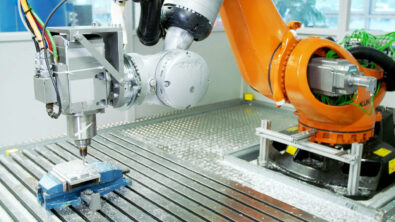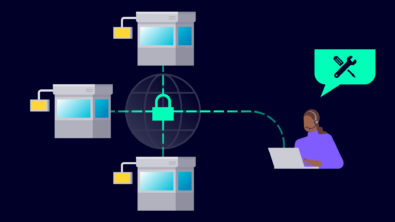Navigate disruption with the IIoT

Disruption and unforeseen events occurring in an industrial machinery environment is not a question of if, but a question of when and how. And while it is the most efficient for everything to run as planned all the time, it is not a reasonable assumption to make and the processes in place need to be flexible enough to weather events that could otherwise decimate productivity. It can also be difficult to know what the critical points in a process are without both broad and deep insight into production. This is where the industrial internet of things (IIoT) comes into the equation for many businesses.
Future-proof with the IoT
Over the course of five episodes in the miniseries Future-proof with the IoT, our experts on industrial machinery and the IoT covered many of the questions plaguing facilities around the world either looking to gain a competitive edge or know that they need to implement some form of IoT. If you are looking to learn about how the IoT is helping mitigate many of the common struggles of industrial machinery please check out episodes one, two and three. For a more in-depth analysis of how to implement the IoT, episode four would be a great starting point. And if you already know that you want to implement an IoT solution but don’t know how to best use the data to plan for emergency situations episode five is for you.
While the input from Sebastian Oeder and Heiko Dickas, both from the electric motor factory at Siemens Bad Neustadt, has been invaluable throughout the miniseries their firsthand insights of change during the COVID-19 pandemic are really highlighted in this episode. Let’s dive into what changed for the Bad Neustadt factory.
Accelerated changes
Though just as surprised by the effects as the global community, Sebastian and Heiko’s teams were able to implement changes almost immediately. Some came from understanding what portions of the facilities could be automated or controlled remotely, but others relied on simulation and process information to understand where there was a high chance of interaction among employees on the floor. By re-routing processes first in the digital world based on IIoT process data and then in the real world with employees that needed to remain on-site, the Bad Neustadt motor factory was able to keep everyone as safe as possible while still delivering a steady supply from the floor.
This was only possible because they had an IIoT system in place to understand what is happening on the shop floor. Fortunately, as Matthias Lutz explains in the episode, an advanced system is not required to benefit during such a disruption. Even small implementations can have a great impact on processes. Even something that is often already included in new industrial machinery – performance analytics – can greatly increase the flexibility of daily operations when connected with the IIoT. Instead of requiring an engineer to be in front of the machine in question, the performance can be evaluated remotely. For the COVID-19 pandemic that meant fully remote and at home, but it could also mean a centralized department in the factory with insight over every machine on-site, reducing time to engage with machines while also granting an avenue for greater flexibility if something is not working as expected.
There are many more great topics discussed throughout episode five of the Future-proof with the IoT miniseries, but one last topic that could grow in importance over the next decade is the pathway for reduced energy and resource consumption of processes. Greater insight into processes allows for many multi-domain optimizations and as much of the world moves towards a more sustainable future it will be important, even just economically, to reduce energy and resource consumption. The data from the IIoT provides a more cost-effective path for this optimization as compared to the traditional engineering studies that can take months to understand a single variable of the system.
Siemens Digital Industries Software is driving transformation to enable a digital enterprise where engineering, manufacturing and electronics design meet tomorrow. Xcelerator, the comprehensive and integrated portfolio of software and services from Siemens Digital Industries Software, helps companies of all sizes create and leverage a comprehensive digital twin that provides organizations with new insights, opportunities and levels of automation to drive innovation.
For more information on Siemens Digital Industries Software products and services, visit siemens.com/software or follow us on LinkedIn, Twitter, Facebook and Instagram.
Siemens Digital Industries Software – Where today meets tomorrow


